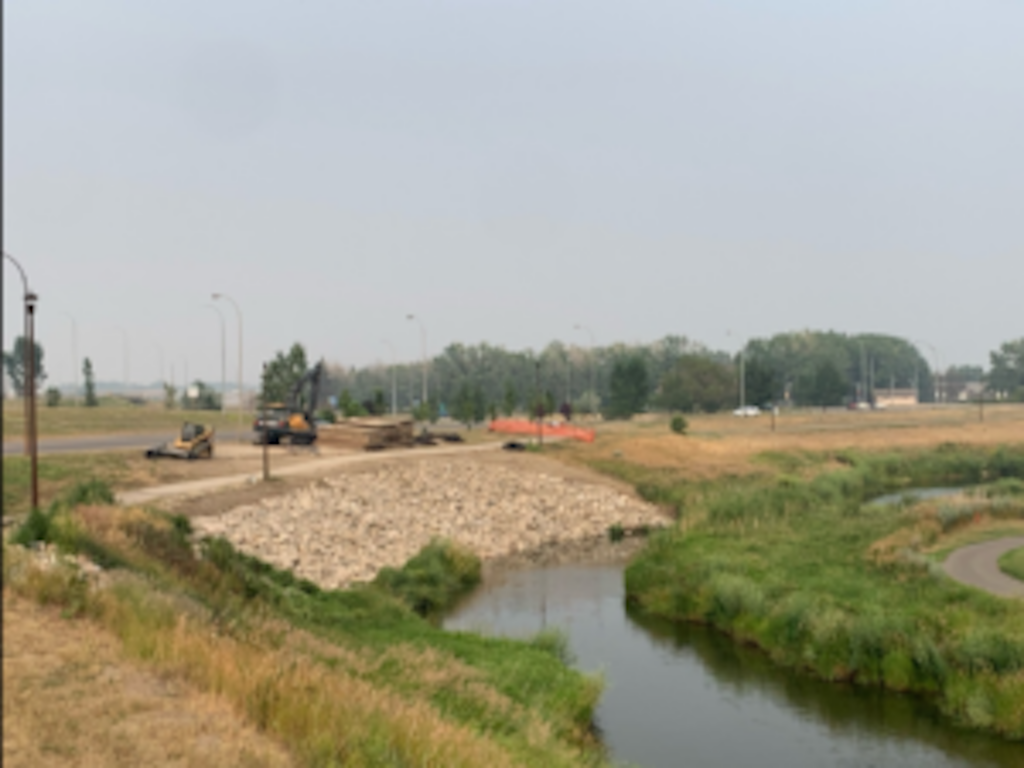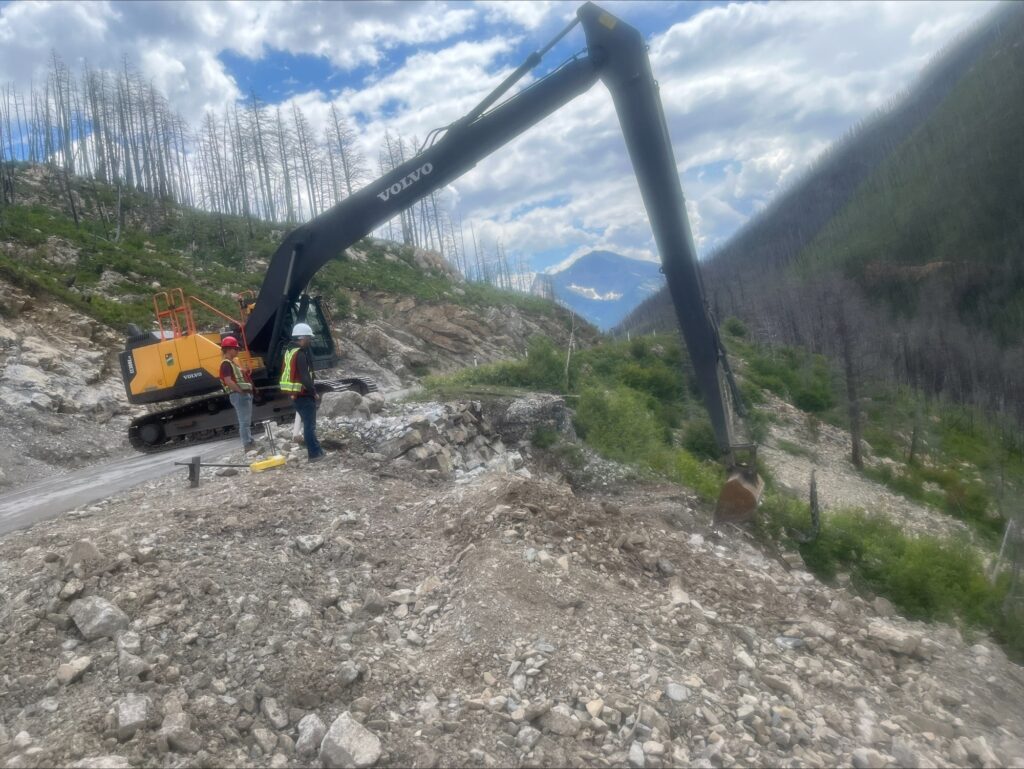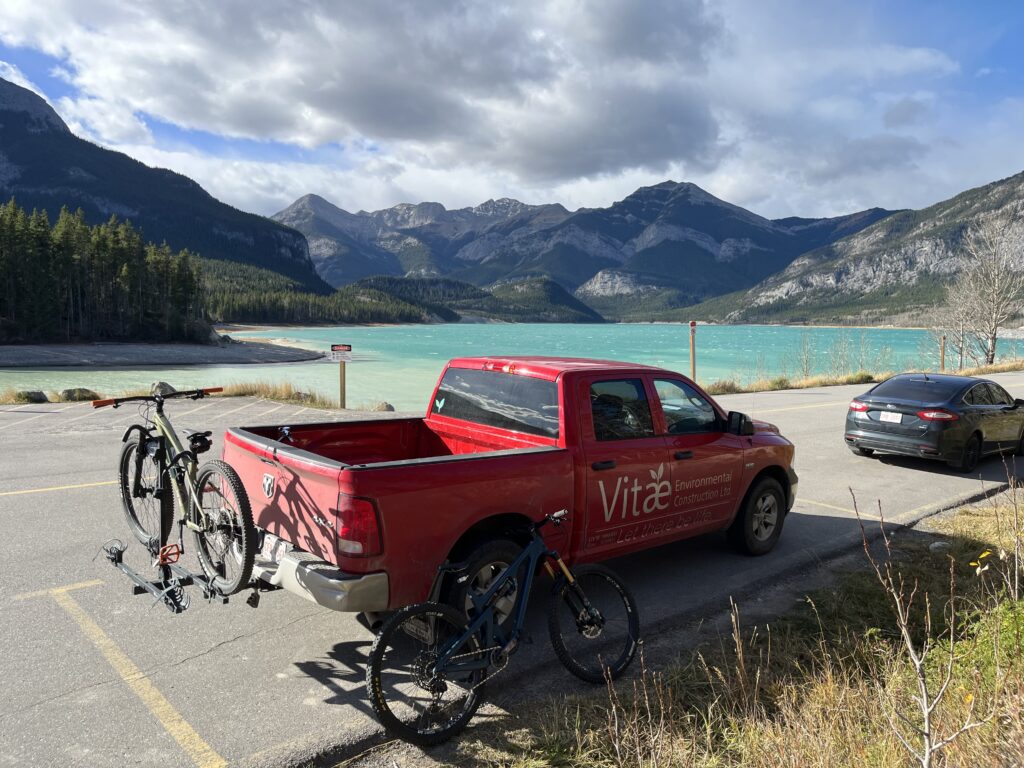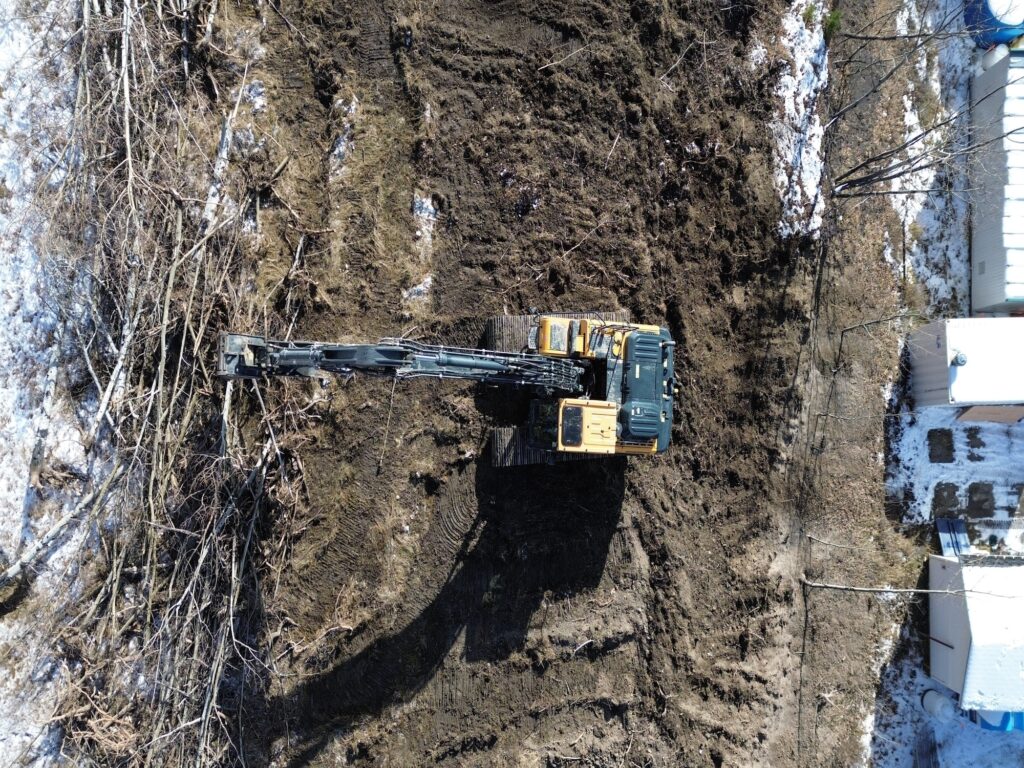Erosion Control: Protecting our Waterways

Blog Protecting the Earth: Exploring Erosion Control Practices Erosion control is crucial for environmental stewardship. It prevents soil loss and maintains the integrity of landscapes. This involves using various techniques to reduce the impacts of wind, water, or human activity. Vitae Environmental Construction prioritizes innovative solutions for effective sediment management, recognizing its importance in protecting our natural environment. What is Erosion Control? Erosion control encompasses different methods to stabilize soil and prevent sediment runoff. Key approaches include physical barriers, vegetative cover, bioengineering, and erosion-resistant materials. Implementing these measures helps protect valuable topsoil, prevent water pollution, and preserve sensitive habitats. Which Plants are Beneficial for Erosion Control? Native vegetation plays a vital role in ground stabilization. Some plant species have extensive root systems that stabilize soil and reduce erosion. Plants like grasses, shrubs, and trees, with deep, fibrous roots, are particularly effective in anchoring soil. Vitae Environmental Construction utilizes the natural soil protection properties of native plants to restore disturbed landscapes and promote long-term soil stability. Why is Erosion Control Important? Soil stabilization goes beyond preserving landscape aesthetics. It is essential for protecting ecosystem health and surrounding habitats. Soil erosion can lead to sedimentation in waterways, which reduces water quality and threatens aquatic habitats. By applying effective erosion mitigation measures, we mitigate the environmental impact of erosion and foster healthier, more resilient ecosystems. Conclusion At Vitae Environmental Construction, we understand the critical role of sediment symmetry in maintaining the vitality of our natural surroundings. Our goal is to minimize soil loss, prevent sedimentation, and uphold the ecological integrity of landscapes. By integrating these practices with native vegetation, we strive to enhance environmental health and resilience for future generations. Contact us today to learn more .
Hydroseeding and Sustainable Development

Blog Hydroseeding and Sustainable Development: An Eco-Friendly Approach What is Hydroseeding? Hydroseeding, also known as hydraulic mulch seeding, is a process used in land reclamation, erosion control, and vegetation establishment. The hydroseeding units work by mixing and agitating seed, fertilizer, and mulch into a slurry which is then sprayed onto the ground in an even layer. The special slurry forms a blanket on bare soil, protecting the soil from erosion and runoff, and holding the seed in place until it gets growing. Benefits of Hydroseeding 1. Erosion Control: One of the primary uses of hydroseeding is to prevent soil erosion. It accomplishes this by creating a protective layer of mulch over the soil surface, which helps to stabilize the soil and prevent it from becoming mobile through water or wind. 2. Vegetation Establishment: Hydroseeding facilitates the rapid establishment of vegetation. The fibers contained in the mulch products along with the tackifier allow for intimate soil contact with the seed being applied. These mulches also improve moisture retention providing additional support for establishing a seed bed. 3. Cost Efficiency Compared to traditional seeding methods such as sodding or hand seeding, hydroseeding is often more cost-effective. It can cover large areas quickly and requires fewer labor hours, especially on slopes or difficult terrain where manual seeding would be challenging. 4. Versatility Hydroseeding can be used in a variety of landscapes and applications, including residential lawns, highway embankments, mine reclamation sites, golf courses, sports fields, and more. It is adaptable to different soil types and conditions making it a great solution for the construction industry. 5. Environmental Benefits By stabilizing soil and promoting vegetation growth, hydroseeding helps reduce sediment runoff. It also enhances soil health by adding organic matter through the mulch and fertilizer components. 6. Speed of Establishment Vegetation established through hydroseeding typically grows more quickly than with traditional seeding methods. This is due to the favorable conditions created by the mulch layer, which retains moisture and protects seeds from birds and other disturbances. Embracing Hydroseeding for a Sustainable Future Hydroseeding stands out as a cost-effective, versatile, and eco-friendly solution for large-scale projects. By stabilizing soil, promoting rapid vegetation growth, and reducing sediment runoff, hydroseeding plays a vital role in sustainable construction practices. Its adaptability to various landscapes and efficiency make it an excellent choice for projects ranging from residential lawns to large-scale environmental reclamation. As we move towards more sustainable development practices, hydroseeding offers a promising method for achieving both environmental and economic goals. Trust Vitae Environmental Construction to guide you in leveraging hydroseeding for a greener future. Contact us today to learn more about our hydroseeding solutions and how we can support your sustainable construction projects.
Effective Strategies for Erosion Control

Blog Protecting Our Waterways: The Essentials of Erosion Control Erosion control is an important but frequent aspect of environmental preservation and construction. Erosion becomes a major concern as our landscapes change over time due to a variety of human activity and natural forces. Fortunately, we can lessen its effects and safeguard our priceless ecosystems if we have the appropriate information and skills. Let’s explore its principles, eco-friendly building materials, efficient techniques, and preventive measures What is Erosion Control? Using techniques to stop or reduce soil and sediment loss from wind, water, and other natural sources is known as erosion control. It is essential for preserving soil fertility, protecting water quality, and upholding the integrity of landscapes. The consequences of inadequate measures can be dire, compromising the stability of infrastructure, destroying habitats, and settling water bodies. Sustainable Materials for Erosion Control Sustainability is the cornerstone of our operations at Vitae Environmental Construction. Our first goal is to use eco-friendly materials that not only serve their intended function but also lessen their adverse effects on the environment. Examples of sustainable materials include natural fiber logs, coconut coir mats, biodegradable blankets, and native plants. Subsequently, these materials support our dedication to sustainable building methods by providing both functionality and environmental friendliness. Methods for Erosion Control Various techniques are used to control erosion, depending on the particular features of the landscape and the factors that contribute to erosion. Among the most effective techniques are: 1. Vegetative Cover By stabilizing the soil, lowering surface runoff, and boosting infiltration, planting vegetation—such as grasses, shrubs, and trees—establishes root systems and soil structure. 2. Terracing Building retaining walls or terraces on slopes helps to reduce erosion by slowing down water flow, inducing stability, and breaking up the length of the slope. 3. Silt Fencing By erecting silt fences alongside contours, sediment carried by runoff is captured and kept from downstream reaching sensitive areas or water bodies. 4. Mulching Using organic mulch materials, like wood chips or straw, helps prevent erosion of bare soil, minimize surface runoff, and retain soil moisture. 5. Hydroseeding A slurry of seed, mulch, fertilizer, and tackifier is sprayed on exposed soil to quickly establish vegetation and control erosion. 5 Ways to Prevent Erosion Remedial measures are rarely more environmentally friendly or cost-effective than erosion prevention. The following are five proactive measures that people and organizations can take to stop erosion: 1. Maintain Vegetative Cover: To prevent soil erosion, maintain existing vegetation and add vegetative cover to exposed or vulnerable areas. 2. Put Stormwater Management Into Practice To lessen runoff and erosion, install rain gardens, permeable pavements, and other stormwater management techniques. 3. Oversee Construction Sites To reduce soil disturbance and erosion during construction activities, use erosion control techniques like silt fencing, sediment traps, and construction phasing. 4. Practice Soil Conservation To lessen soil erosion in agricultural landscapes, use techniques like contour plowing, strip cropping, and no-till farming. 5. Educate and Raise Awareness Prioritizing Erosion Control for a Sustainable Future Advise on sustainable land management and educate stakeholders, landowners, and communities on the importance of erosion control. By prioritizing and implementing sustainable practices, we can protect our environment, support ecosystem health, and, ultimately, ensure the longevity of our landscapes for future generations. For erosion control products, environmental construction services, or expert advice, Vitae Environmental Construction is your trusted partner in protecting the integrity of our planet. Contact us today to learn more about our erosion solutions.
Permeable Pavement: Sustainable Construction Practices

Blog Permeable Pavement: Sustainable Solutions for Urban Water Management Development in urban areas often disrupts the natural infiltration of water, leading to many issues, such as flooding, erosion, and pollution. Many traditional pavements, made of solid concrete or asphalt, worsen these problems by preventing water from penetrating the ground. Basically, permeable pavement is a sustainable alternative that can help substantially mitigate these issues by allowing water to pass through the surface, promoting natural infiltration, and reducing runoff. Let’s take a peek at the benefits, types, and applications of this sustainable construction practice. What is Permeable Pavement? A.K.A. porous or pervious pavement, is a type of pavement designed to allow water to flow through its surface. Unlike traditional pavement, which does not allow the natural flow of water through its surface, and is constructed with larger spaces that enable water to flow into the drainage layers and soil below. In this type of pavement, fine materials such as sand are removed to create a more porous structure, allowing water infiltration. Benefits of Permeable Pavement 1. Reduces Runoff and Flooding One of this material’s main advantages is its ability to lessen stormwater runoff. By allowing water to seep into the ground, permeable pavement reduces the chance of erosion and helps to prevent flooding. This is especially crucial in urban settings, where impervious surfaces predominate and natural infiltration is severely restricted. 2. Enhances Groundwater Recharge Rainwater seeps into the soil through the pavement’s surface and pores, which encourages groundwater recharge. This promotes the restocking of aquifers and the maintenance of nearby water supplies by upholding the natural hydrological cycle. Permeable pavement can be essential for preserving water in places with a shortage. 3. Improves Water Quality Water naturally filters as it moves through the pavement and into the earth. This process improves the water quality that eventually reaches groundwater sources, aiding in the removal of pollutants and contaminants. Thus, this soution can help provide urban areas with cleaner, healthier water. 4. Mitigates Urban Heat Island Effect The urban heat island effect can also be lessened using permeable pavement. Urban areas experience higher temperatures due to traditional pavements’ absorption and retention of heat. However, water can evaporate from the surface, lowering ambient temperatures and producing a cooling effect. Applications of Permeable Pavement Permeable pavement can be used in a variety of settings to promote sustainable water management: Parking Lots: It helps to manage stormwater runoff, reduce flooding, and improve water quality. Driveways: Prevents water pooling and supports groundwater recharge. Roads: Permeable asphalt or concrete roads reduce surface runoff and contribute to cooler urban temperatures. Pedestrian Pathways: Pervious concrete or interlocking paver pathways enhance water infiltration and provide durable, aesthetically pleasing surfaces. Permeable pavement provides a sustainable construction solution to the challenges of urban water management. It contributes to landscape restoration by encouraging natural infiltration, reducing runoff, and improving water quality. Using permeable pavement can be essential to building more resilient and sustainable cities as urban areas expand. Whether used in parking lots, driveways, roads, or pathways, this method is a practical and effective stormwater management solution that improves the urban environment.
Sustainable Construction: Building a Greener Future with Vitae

Blog Sustainable Construction In today’s evolving construction industry, sustainability is more than a buzzword. It is a guiding principle that drives innovation. Environmental construction practices prioritize environmental stewardship, resource efficiency, and long-term ecological viability. Vitae Environmental Construction is dedicated to leading the charge for a greener future. We use sustainable materials, eco-friendly construction methods, and reclamation practices. Sustainable Construction This building methodology encompasses a variety of strategies and techniques designed to reduce environmental impact and promote ecological resilience. The use of environmentally friendly materials derived from renewable or recycled sources is a critical component of green construction. These materials not only reduce the carbon footprint of construction projects but also contribute to the preservation of natural resources. Sustainable Building Materials Vitae Environmental Construction prioritizes sustainable building materials in all projects. We carefully select materials that reduce waste and emissions while increasing durability and performance, using reclaimed wood, recycled metals, and low-impact concrete. By incorporating these sustainable materials, we not only reduce environmental impact but also create healthier, more resilient built environments. What Is Sustainable Construction Sustainable construction is more than just the materials we use; it also includes the practices and processes we use throughout each project’s lifecycle. From design and planning to construction and maintenance, each stage of the process presents an opportunity to reduce environmental impact and promote sustainability. At Vitae Environmental Construction, we integrate sustainable practices into every aspect of our work, from erosion and sediment control to bioengineered streambank stabilization. Eco-Focused Construction Practices Reclamation is central to our efforts, using native revegetation, soil conditioning, and erosion control to restore disturbed land, promote biodiversity, and reduce environmental impact. We ensure the long-term health of ecosystems through ongoing maintenance and monitoring. The Vitae Promise In the construction industry, sustainability is more than a goal; it is a responsibility. As environmental stewards, we must prioritize sustainability in all that we do. At Vitae Environmental Construction, we fully embrace this responsibility, striving to redefine sustainable construction standards and set a good example in the pursuit of a greener, more sustainable future.




